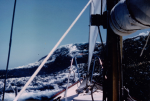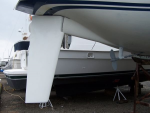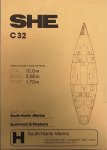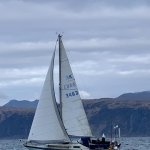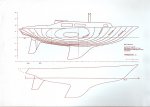andsarkit
Well-known member
From the link above : "Many Contessa 32s have sailed around in the Tropics, but true bad weather just doesn’t exist there. As far as I am concerned, it is a bad and a dangerous boat. Hindsight is always a wonderful thing of course, but – assuming that a Contessa 32 can point acceptably in high winds and heavy seas, a very open question – had she turned it around and sailed upwind, she might have come out better off because designs like this one just won’t run in heavy seas. "Eric from Nordkyn Design on the Contessa 32 and the weakness of that pinched stern in following seas:
Heavy weather dynamics: the behaviour of yachts in following seas | Nordkyn Design
These are his opinions, not mime, I'm just providing the link. Mind you, he is a naval architect, and I am not.
Perhaps someone should have told Pierre Huglo in Red Herring. Longue Route
My little boat seemed to cope quite well going downwind with the storm jib sheeted hard amidships. Not extreme conditions but quite windy.
